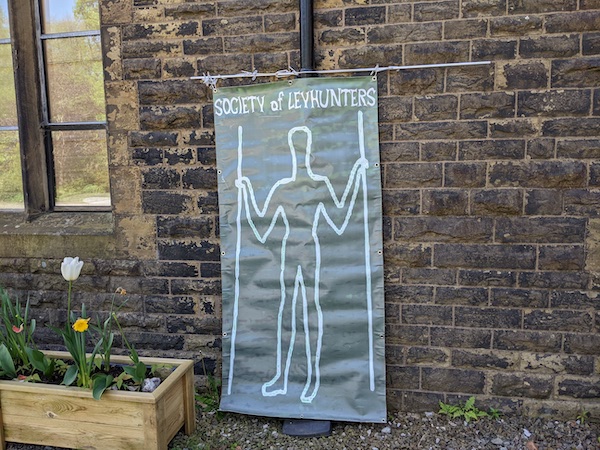I was reading the most recent copy of Northern Earth a little late when I saw that the Society of Ley Hunters were holding their annual moot the following week in Todmorden, a short distance from my house. So, of course, I signed up and attended with my friend Ava.

The day included four talks: a discussion of leys in Calderdale; a personal account of spiritual awakening; a theory about ’intuitive alignments’; and a discussion of alt-antiquarianism and psychogeography. Before all this, John Billingsley gave us an introduction to Todmorden itself, and how “Todmorden has an undercurrent of weird ideas”. John talked about the town’s liminal nature, often swapping between Lancashire and Yorkshire, and how it exists on the boundary between cotton country and wool country, which he says led to the idea that corduroy was invented in nearby Hebden Bridge.
We did a session of dowsing in the lunch break. Dowsing is not something that fits into my conceptual frameworks of the world, except as some sort of ideomotor trick. Working with the rods, it was interesting to see how quickly they responded to subconscious expectation. We’d been told what we were marking out, so it was obviously suggestion, but the effect was still pronounced.
I found interesting things in each of the four talks, but my favourite was John Billingsley’s discussion of alt-antiquarianism and psychogeography. I particularly liked how this talk responded to psychogeography as an inherently political idea, rather than trying to turn it into something cosy, as sometimes happens.
John has edited NE since 1979, taking a revisionist approach to Earth mysteries, avoiding both Neo-paganism and materialism. Psychogeography was an aspect of this because of its link between mind and place.
Psychogeography was explicitly linked with urban spaces at its invention, but as John point out, “power and control are also present in the country”. An example of this that he gave was Stonehenge and how the heritage industry is part of consumer culture, gaining income through fencing off sites. John spoke about the need for synaesthesia and phenomenology as alternative ways of approaching places and for thinking in the same way as earlier communities did. He spoke inspiringly about places as palimpsest; and how, as well as lost pasts, there are lost futures within the landscape.